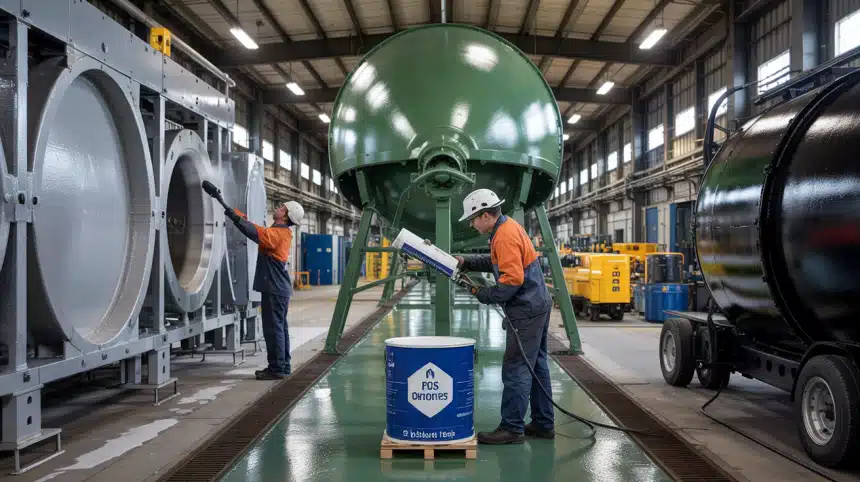Ever watch a bridge withstand decades of punishing weather?
That’s industrial coatings at work. I’ve seen firsthand how the right coating saves millions while extending equipment life. Frustrated by corroding machinery or infrastructure failure?
These specialized formulations create an invisible shield against moisture, chemicals, and abrasion that would otherwise destroy valuable assets.
The right coating converts surfaces into barriers against the passage of time. Ready to learn how these solutions can slash maintenance costs while dramatically extending asset lifespan? Let me show you how.
Types of Industrial Coatings and Where They Work Best
Industrial coatings aren’t one-size-fits-all solutions. Each type is specially designed to protect against specific challenges. Let me break down the main types in plain language:
1. Epoxy Coatings
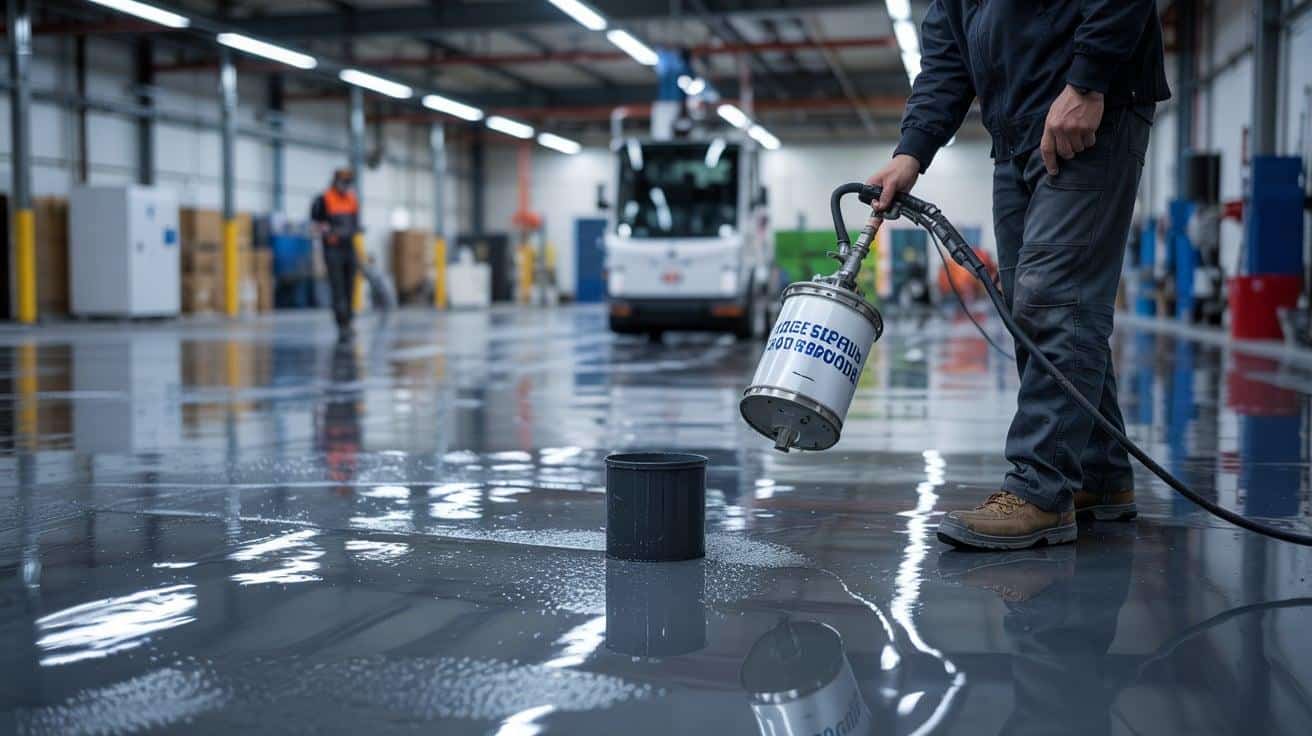
Think of epoxy as the workhorse of industrial coatings. I love recommending these for concrete floors in factories and warehouses because they create an incredibly tough, chemical-resistant surface.
They bond extremely well to concrete and metal, making them ideal for areas with chemical spills or heavy traffic. However, they don’t love UV light, so they’re best used indoors.
2. Polyurethane Coatings
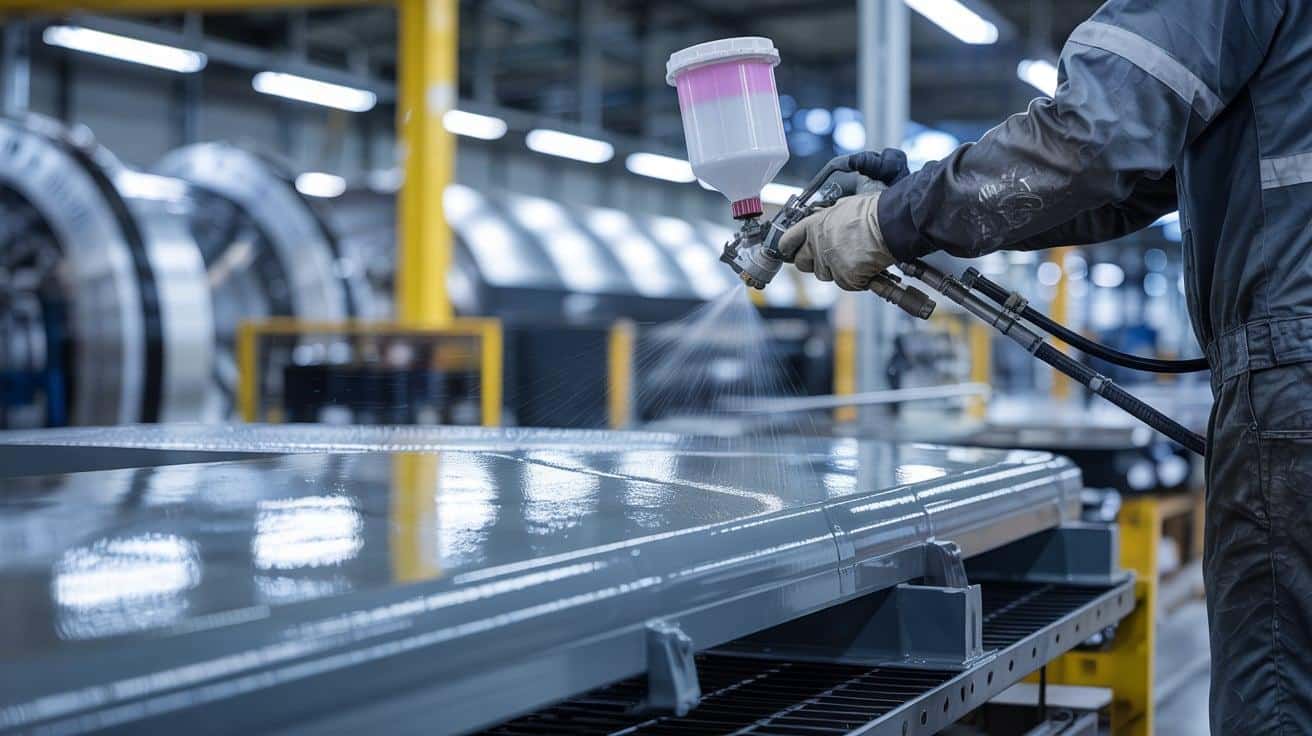
When I need something that handles outdoor conditions better than epoxy, polyurethane is my go-to. It retains its color and shine even in direct sunlight, making it ideal for the top layer in a coating system.
I often recommend it for equipment that needs to withstand weather exposure while maintaining a good appearance, such as outdoor machinery or architectural elements.
3. Zinc-Rich Primers
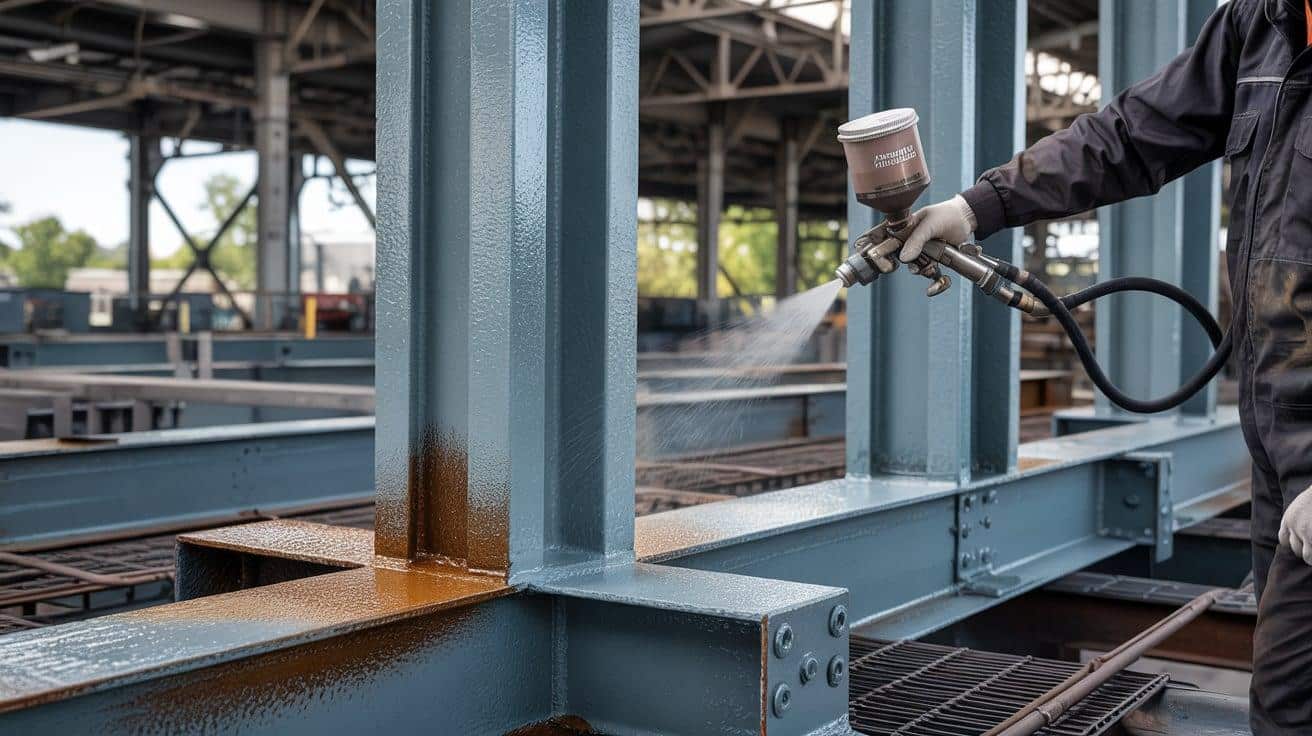
These are the unsung heroes beneath the surface. I recommend using zinc primers as the first layer on metal structures, such as bridges or offshore platforms.
Zinc sacrifices itself to protect the steel underneath, literally corroding first so your valuable metal doesn’t have to.
4. Polysiloxane Coatings
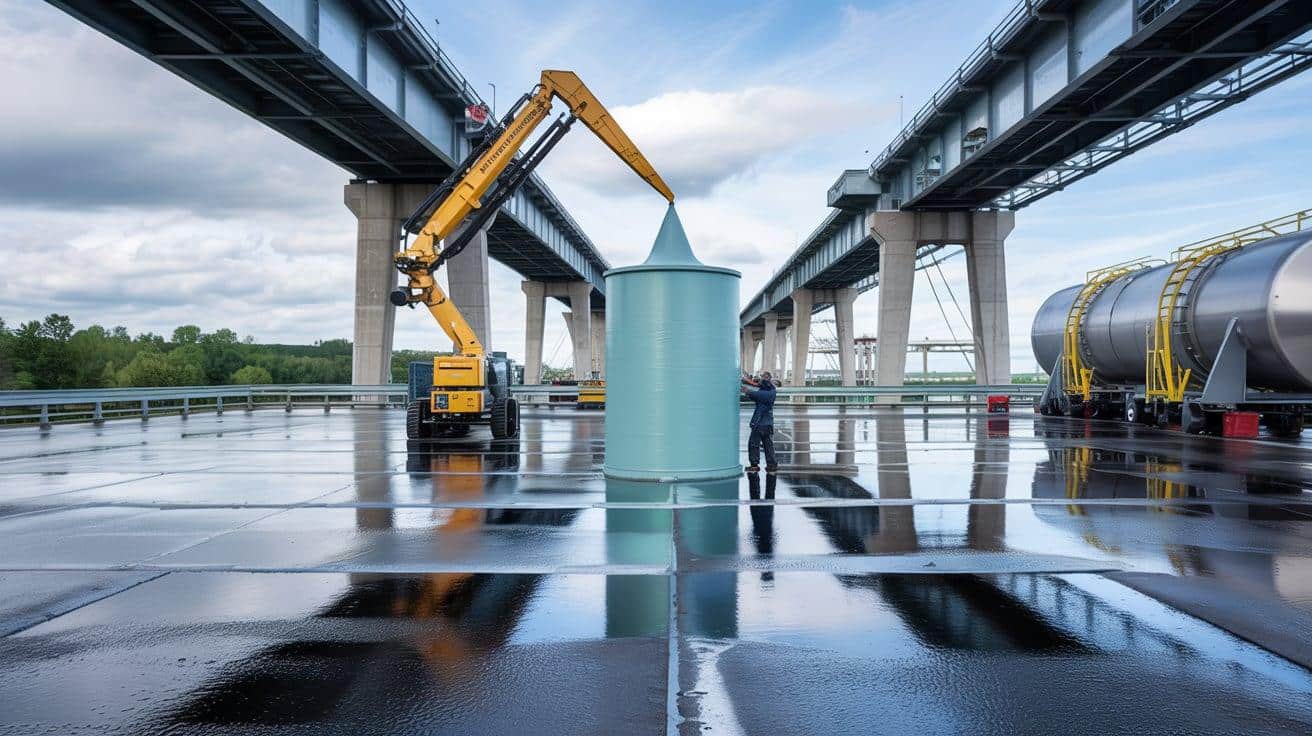
These high-performance coatings combine the best of epoxies and polyurethanes. I’ve seen them work wonders on coastal structures and chemical plants, where you need serious chemical resistance and weatherability, all in one coating.
5. Polyurea Coatings
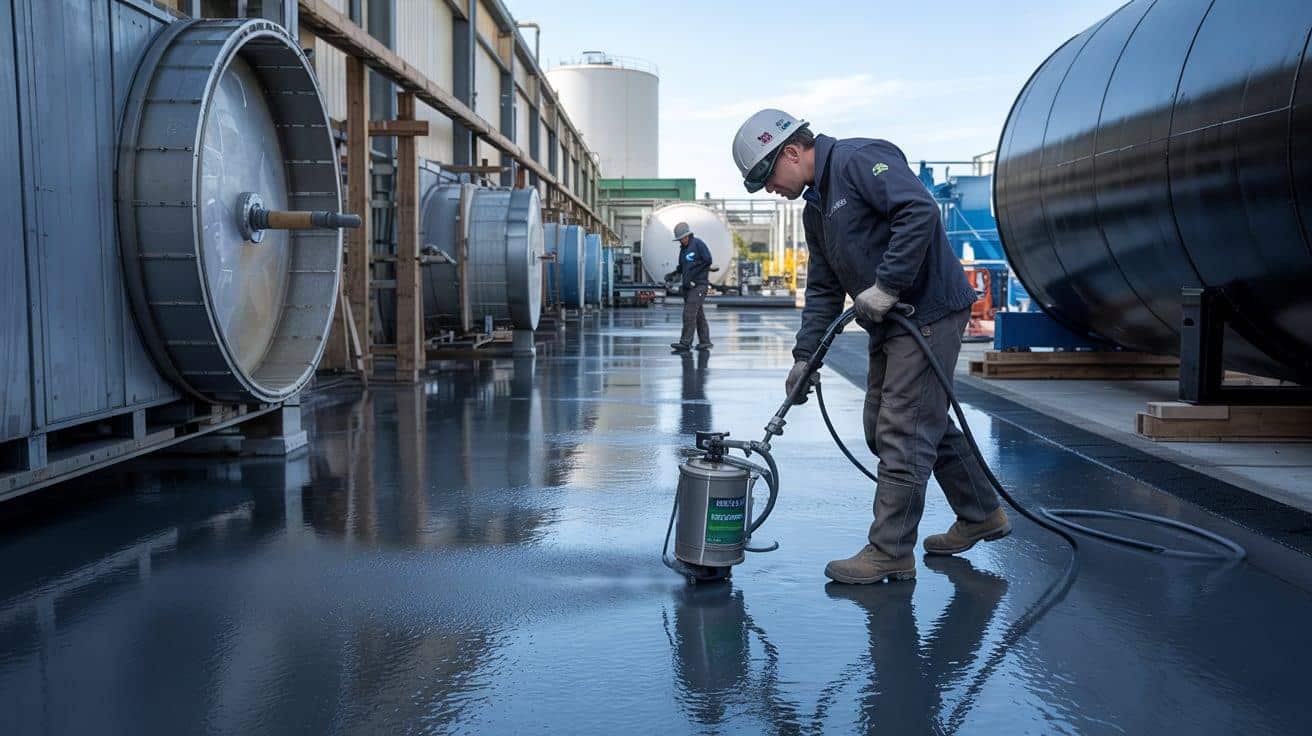
When rapid curing matters, nothing beats polyurea. I’ve watched this stuff dry to the touch in minutes! This makes it ideal for areas that can’t be shut down for extended periods, such as water tanks, secondary containment areas, or loading docks that require rapid return to service.
6. Alkyd Coatings
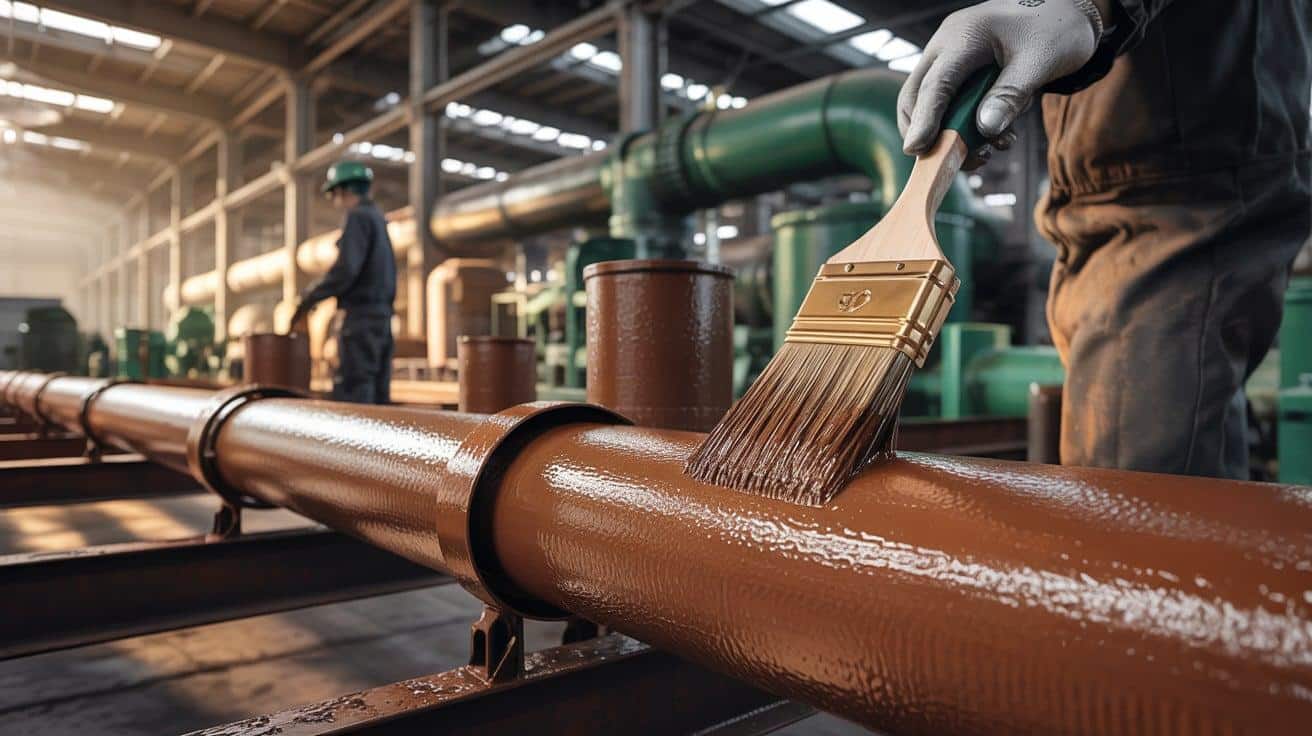
These old-school coatings are oil-based and simpler than the more advanced options above. I still recommend them for basic metal protection in mild environments, especially when budget matters. They apply easily, but don’t expect them to handle harsh chemicals or extreme conditions.
Key Advantages of Industrial Coatings
Let’s talk about why industrial coatings are such a big deal. They’re not just fancy paint, they’re problem solvers.
They Last Forever (Almost)
- Think about how your backyard fence looks after a few rainy seasons. Now imagine what factory equipment goes through! Industrial coatings are tough enough to handle it all.
- I’ve seen coatings on bridges that’ve withstood over 30 years of rain, snow, and traffic.
- These coatings extend the life of your equipment by creating a barrier against rust, chemicals, and wear. It’s like giving your machinery a suit of armor.
They Save You Money
- Without good coating, here’s what happens: things rust, break down, and need replacing often when you least expect it. The repair bills add up fast.
- Good coatings may seem expensive upfront, but they’re much cheaper than replacing your items every few years.
They Keep People Safe
- This is an advantage that people often overlook. Corroded equipment isn’t just expensive, it’s dangerous. When metals weaken, things can break, leak, or fail.
- Good coatings help prevent accidents by keeping everything strong and working properly. They contain harmful substances, prevent electrical problems, and ensure the proper functioning of important safety equipment.
- In a way, industrial coatings serve as a safety system that can be applied with a brush.
Industry Trends and Market Insights
Let’s discuss the current state of the industrial coatings industry. The market is changing fast, and it’s worth knowing where things are headed.
1. The Market Is Booming
The industrial coatings market isn’t just growing – it’s exploding. I’ve watched it increase year after year, and experts predict it’ll continue to climb.
Why? Because more countries are building infrastructure at a rapid pace. Think about all the bridges, factories, and skyscrapers going up in developing countries. Each one needs serious protection.
Additionally, outdated infrastructure in places like the US and Europe is deteriorating and requires repair. Add in more manufacturing worldwide, and you can see why coating companies are working overtime to keep up with demand.
2. Going Green Is No Longer Optional
Remember when “eco-friendly” was just a nice bonus? Those days are gone. I’ve noticed a significant shift toward environmentally friendly coatings.
Companies are racing to create products with low VOCs (volatile organic compounds, which are harmful chemicals that evaporate into the air) and water-based formulas, rather than solvent-based ones.
The really interesting part? These green coatings are starting to outperform the old toxic ones. Customers are demanding higher environmental standards, and governments are implementing stricter regulations. The coating companies that will thrive are those that are fully committed to sustainability now.
3. Smart Coatings Are Changing the Game
The coolest trend I’m seeing? Coatings that actually do more than sit there looking pretty. We now have coatings that can:
- Heal themselves when scratched
- Change color when they detect corrosion underneath
- Kill bacteria on contact
- Reflect heat to save energy
- Conduct electricity while protecting the surface
These aren’t sci-fi fantasies; they’re actually being used right now. The technology for applying coatings is also improving. Robots and automated sprayers are replacing manual work, resulting in more consistent and longer-lasting coatings.
Challenges and Considerations
Let’s discuss the challenging aspects of selecting and applying industrial coatings. Here are the big three challenges you’ll face.
1. Following the Rules
The government establishes strict regulations regarding coatings, which are subject to ongoing changes. I’ve watched companies panic when they discover their coatings suddenly don’t meet new laws.
These rules cover things like:
- Chemicals that harm the environment
- Safety for workers applying the coatings
- Fire protection requirements
Staying on the right side of these rules means checking what’s in your coating products regularly. The good news is that coating manufacturers are developing new products that adhere to the rules and still perform effectively. Just ensure you work with suppliers who are familiar with all the latest regulations.
2. Making Sure It Really Works
We’ve all bought something that broke way sooner than it should have. With industrial coatings, this kind of failure can cost millions.
Before you trust a coating to protect your equipment, you need real proof it works. Good coatings go through tough tests like:
- Salt spray tests (for rust resistance)
- Scratch and wear tests
- Stick-to-surface tests
- Weather tests for outdoor use
Always ask to see the actual test results for any coating you’re considering. Good suppliers will have papers showing how their products performed in conditions like yours.
3. Is the Price Worth It?
The big question: Should you pay more for better coatings?
I’ve seen $10 coatings fail in months while $30 coatings last for 10+ years. When deciding, think about:
- How important is the equipment?
- How much would it cost if it breaks down?
- How harsh is the environment?
- How long do you need it to last?
Sometimes, paying more up front can save a significant amount of money later. At other times, a basic coating is sufficient.
The smart way to decide? Don’t just look at today’s price tag. Add up the costs of failures and replacements over time. Then compare that to paying more for better protection now. For critical equipment in demanding environments, superior coatings typically yield long-term cost savings.
Conclusion
Industrial coatings do much more than protect surfaces; they’re a crucial business decision. From saving money through extended equipment life to keeping workers safe from dangerous failures, the right coating makes all the difference.
As regulations become tougher and greener options improve, staying informed about your coating choices is more important than ever. The coating industry is constantly evolving, with the introduction of smart coatings and robotic application methods enabling enhanced protection.
Ready to reduce maintenance costs and extend the lifespan of your equipment?
Begin by testing various options tailored to your specific needs, focusing on long-term value rather than just upfront cost. Your equipment deserves the right protection, and your budget will thank you for years to come.
Frequently Asked Questions
1. What Are the 6 Types of Powder Coatings for Metal?
The six types of powder coatings for metal are epoxy, polyester, polyurethane, acrylic, silicone, and hybrid.
2. What is in PVD Coating?
PVD coating contains metal materials like titanium, chromium, or zirconium that are vaporized and deposited onto surfaces in a vacuum chamber to create thin, hard films.
3. What is 3-Stage Powder Coating?
Three-stage powder coating involves applying a primer coat first, followed by a base color coat, and then a clear topcoat to provide maximum protection and visual depth.

